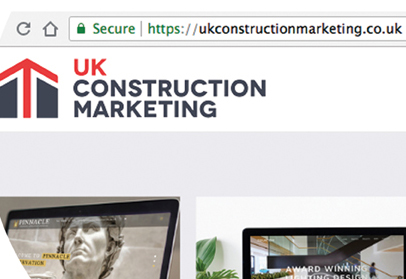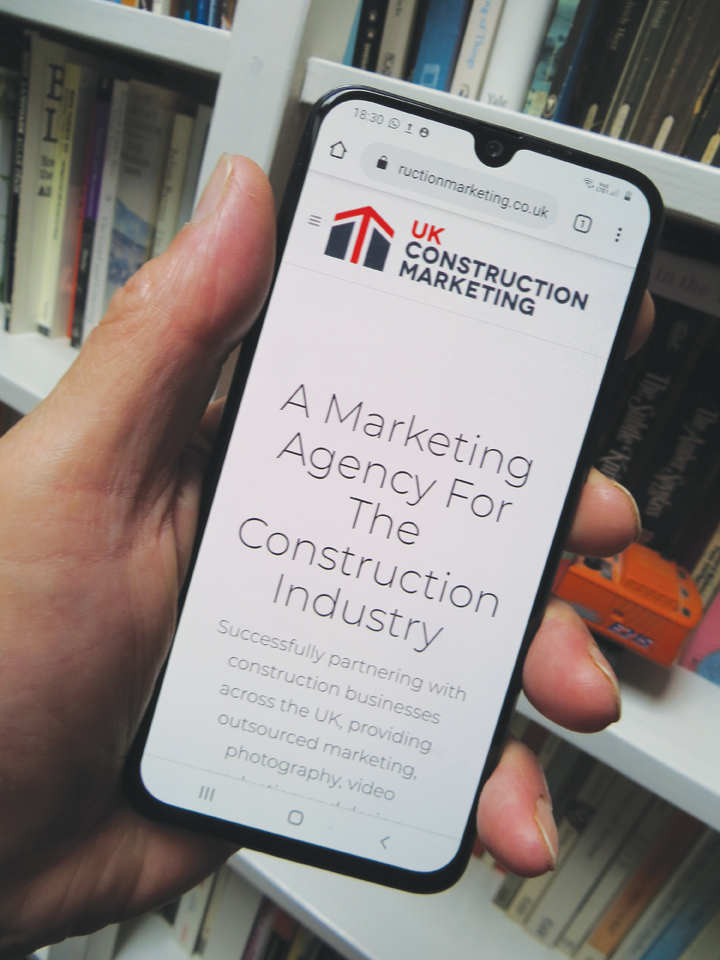Kate Bygrave, Managing Director of UK Construction Marketing, offers some advice on getting your message heard above the noise.
If you are busy concentrating on running your business, you may feel you have little time for marketing. Or maybe you see the benefits in marketing, but you don’t know where to start? After all, there are lots of options out there, and it can be difficult to choose where to invest your money.
Let’s start with marketing strategy. This outlines how your business will reach or attain a mission or goal. It will include campaigns, channels and the content required to achieve that mission.
Your marketing plan will contain a strategy that will encompass plans for social media, SEO, promotional materials, events, advertising and how you intend to promote the business.
The first stage is to map out a strategy by stating what the business actually does and for whom. Then determine what success looks like – attracting more customers, increased views on the website, leading to more business.
The second stage is to identify your audience. For this we would create a buyer/client persona, a description of the person who will become your new customer – their age, profession, location and all the other criteria that are relevant to your business model.
Once the audience has been identified, we would concentrate on the actual content of your strategy.
This can take the form of a blog / news posts, videos, ebooks, case studies, accreditation goals, industry guides, CPDs, webinars... there are more.
 Your website must be secure. That means the URL starts with https://
Your website must be secure. That means the URL starts with https://
The frequency of the offerings would be determined – daily, weekly, monthly – and also the channels to be used, including your website, email, LinkedIn, YouTube, publications, posters and more.
Then, importantly, a budget would need to be defined. This can be either a costing of the activities you wish to perform, or a standard percentage of turnover – this would generally be 5-8%, although if you are a new business you might need to allow a larger budget of around 10% to give yourself the best start. B2B (business-to-business) companies spend slightly less than B2Cs (selling to consumers).
This year has been hard with Covid-19 and you may feel that your budget is best spent elsewhere. But if investing in your marketing and brand awareness can bring in more work, isn’t it worth it?
The next stage is finding out who is out there doing exactly the same thing as you – your competition. Who are you up against? This could involve a re-evaluation of your target audience and / or approach to reaching them, with you deciding to go for a different angle or type of customer.
Having taken the previous steps, now is the time to decide whether to concentrate on online and digital channels or offline, or a combination of both.
Typically, around 45% of a total marketing budget goes to online marketing. This can include banner ads and online videos – and more businesses are investing in video than ever before. Around 10% of this will go towards social media advertising.
Direct email marketing leads the way. As long as you have a good database of email addresses properly obtained in accordance with GDPR (General Data Protection Regulation) it can give the best return on investment, not least because the investment can be small. Social media follows close behind. Facebook is still seen to be an important social media platform in 2020. However, we think for the Construction Industry investing time in LinkedIn is more beneficial, especially with B2B businesses.
YouTube is a great platform if you are investing in video content, especially educational videos. YouTube is second only to Google for internet searches and you can easily add the YouTube videos to your own website.
A stone masonry company can invest in video content to highlight the level of skill and knowledge that goes into hand carving and / or the skillset needed to operate your CNC machines. Everyone loves a great on-site video showing the progression of a construction project. These are highly popular as they fulfil an educational need.
There has been a proven decrease in offline advertising and increase in online advertising, but it is your choice on the route you wish to follow.
Our view is that offline advertising is still beneficial in the construction industry as a vast majority of business leaders still read printed publications. However, it is possible to use both to best promote your brand. When committing to print advertising, the publication will often run your advert on their online version too, although this tends to incur an additional (but small) fee.
Of course, advertising is only beneficial and efficient if you already have a super website. There is little point investing hard-earned money in advertising if the window into your business is dated and does not present your business in the best possible light. Remember: people pass judgement within the first three seconds of viewing a website, so make those three seconds count!
Your home / landing page needs to let the visitor know instantly who you are and what you do. Make sure it features plenty of CTA (call to action) buttons leading to a contact form or page, as your ultimate goal is for your audience to get in touch.

 Two essentials: your website must be secure (the address starts with https://) and it must be responsive.
Two essentials: your website must be secure (the address starts with https://) and it must be responsive.
Being responsive means it changes in response to the device used to view it, so it looks great on a mobile, tablet, laptop or desktop. We see too many construction industry business websites that are dated, with spelling mistakes, broken links, poor design and ultimately leaving a negative impact.
There is also still a huge number of ‘unsecure’ websites. These are not favoured by search engines.
I can be pretty confident that some of you reading this will still have a website that begins with http://, which will show up as ‘unsecure’ with a broken padlock symbol. Some firms even set up their office computers so they will not look at http sites.
An http website does not have an SSL certificate, something Google recommended that sites should have back in 2014. It is a simple element, but massively impactful on your search engine rankings and user experience. If you still have an ‘unsecure’ website, make it a priority to update it.
If you’re looking for a website developer and are offered no ‘initial SEO’, walk away. They may be offering their service at a low rate, but a website without the initial SEO is as good as a poster stuck on the back of your garage in the middle of nowhere. No-one will find you unless you take each person, one by one, down the lane to the house, round the back and point at the poster.
We all know that repeat business is fantastic but, as great as it is, it will fade at some point. That means it is never too soon to protect your future. Now is the time to make new connections, reach out to new customers, appeal to younger generations, be on top of hot topics and increase your brand awareness.

